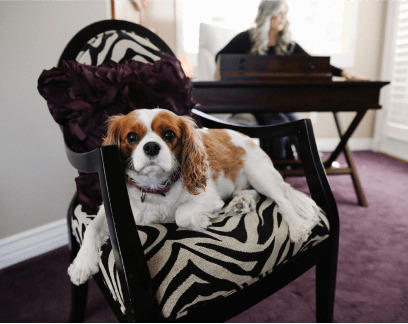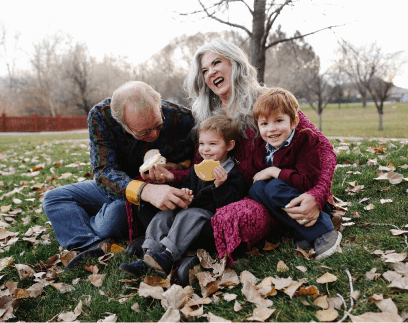[52] Individuals with schizophrenia, it is said, fully identify with the collective unconscious, lacking a functioning ego to help them deal with actual difficulties of life. An influential study of this type, by Rosen, Smith, Huston, & Gonzalez in 1991, found that people could better remember symbols paired with words representing their archetypal meaning. However, Jung was "also at pains to stress the numinous quality of these experiences, and there can be no doubt that he was attracted to the idea that the archetypes afford evidence of some communion with some divine or world mind', and perhaps 'his popularity as a thinker derives precisely from this"[76] the maximal interpretation. The preference for distinct contrasts is hypothesized to . [9] He credited Freud for developing his "primal horde" theory in Totem and Taboo and continued further with the idea of an archaic ancestor maintaining its influence in the minds of present-day humans. Some cultures may split this archetype up; so the womb may express itself as Mary, Mother of Christ (or more recently via Dan Brown as Mary Magdaline, bride of Christ), or in devouring images as seen in depictions of females as vampires, succubi or witches (not to be confused with Wiccans). In Jungian psychology, these archetypes represent universal patterns and images that are part of the collective unconscious. The ego is largely responsible for feelings of identity and continuity. According to Jung's teachings, the collective unconscious is common to all human beings. Some of these contents may be recalled to consciousness, as in Sigmund Freud 's notion of the preconscious, but others cannot and are truly unconscious. Carl Jung and The Collective Unconscious Eternalised December 8, 2021 Analytical psychology carl jung, psychology "The one thing we refuse to admit is that we are dependent upon "powers" that are beyond our control." Carl Jung, Man and His Symbols, Part I. Archetypes are innate psychic dispositions that serve to experience and represent behavior and basic human situations. It consists of pre-existent forms, the archetypes, which can only become conscious secondarily and which give definite form to certain psychic contents. Similarly, morals, ethics, and concepts of fairness or right and wrong could be explained in the same way, with the collective unconscious as partially responsible. Regarding the animus and anima, the male principle within the woman and the female principle within the man, Jung writes: They evidently live and function in the deeper layers of the unconscious, especially in that phylogenetic substratum which I have called the collective unconscious. The Archetypes and the Collective Unconscious, 9(Part 1), 207-254. Groups of people can become especially receptive to specific symbols due to the historical situation they find themselves in. He concluded that the patient's vision and the ancient Liturgy arose from the same source in the collective unconscious. [17] For example, the Eagle is a common archetype that may have a multiplicity of interpretations. According to Jung, the human mind has innate characteristics imprinted on it as a result of evolution. He found that although the images did not elicit significantly different responses to questions about whether they were "interesting" or "pleasant", but did provoke highly significant differences in response to the statement: "If I were to keep this image with me forever, I would be". However, Jungs work has also contributed to mainstream psychology in at least one significant respect. Modern man in search of his soul. [26], Jung considered that 'the shadow' and the anima and animus differ from the other archetypes in the fact that their content is more directly related to the individual's personal situation'. Collective unconscious (German: kollektives Unbewusstes) refers to the unconscious mind and shared mental concepts. For Jung, the result was that the full psychological development both sexes was undermined. [68][69], Organized religion, exemplified by the Catholic Church, lies more with the collective consciousness; but, through its all-encompassing dogma it channels and molds the images which inevitably pass from the collective unconscious into the minds of people. [57], Based on empirical inquiry, Jung felt that all humans, regardless of racial and geographic differences, share the same collective pool of instincts and images, though these manifest differently due to the moulding influence of culture. "Neuroscience and Jung's Model of the Psyche: A Close Fit" (, Rosen, D. H.; S. M. Smith; H. L. Huston; & G. Gonzalez. 2014;13(2):253-92. doi:10.1142/S0219635214400081, Dinan T, Cryan J. Likewise, in Norse mythology, the goddess Freyja is as much a goddess of love and sex, as she is war and death. [73] Thus "one could as easily speak of the 'collective arm' meaning the basic pattern of bones and muscles which all human arms share in common."[74]. collective unconscious, term introduced by psychiatrist Carl Jung to represent a form of the unconscious (that part of the mind containing memories and impulses of which the individual is not aware) common to mankind as a whole and originating in the inherited structure of the brain. For Jung, the purpose of psychic energy was to motivate the individual in a number of important ways, including spiritually, intellectually, and creatively. And of course, some of us move. www.simplypsychology.org/carl-jung.html. Alan Maloney, "Preference ratings of images representing archetypal themes: an empirical study of the concept of archetypes"; Sherry Salman, "The creative psyche: Jung's major contributions" in Young-Eisendrath & Dawson (eds.). R. S. Percival, "Is Jung's Theory of Archetypes Compatible with Neo-Darwinism and Sociobiology?". Our website is not intended to be a substitute for professional medical advice, diagnosis, or treatment. "[13] He traces the term back to Philo, Irenaeus, and the Corpus Hermeticum, which associate archetypes with divinity and the creation of the world, and notes the close relationship of Platonic ideas.[14]. It is the source of both our creative and destructive energies. Many of these connotations were obscure to laypeople. Finally, there is the self which provides a sense of unity in experience. On October 19, 1936, Jung delivered a lecture "The Concept of the Collective Unconscious" to the Abernethian Society at St. Bartholomew's Hospital in London. Twenty years ago, Professor Charles Lawrence wrote "The Id, The Ego, and Equal Protection: Reckoning With Unconscious Racism." This article is considered a foundational document of Critical Race Theory and is one of the most influential and widely cited law review articles. The Archetypes and the Collective Unconscious. These effects of course vary widely, however, since they involve virtually every emotion and situation. This strange and fascinating underworld was a generator of fantasies, of lapses and uncontrolled impulses. Collective consciousness (sometimes collective conscience or conscious) is a fundamental sociological concept that refers to the set of shared beliefs, ideas, attitudes, and knowledge that are common to a social group or society. However, in modern Western civilization men are discouraged from living their feminine side and women from expressing masculine tendencies. It is generally associated with idealism and was coined by Carl Jung. Next is the shadow. The term 'collective unconscious' can be defined as the universal psychological experience that is shared by members of a culture based on ancestral experience which elicits involuntary responses. The archetype is often associated with things and places standing for fertility and fruitfulness: the cornucopia, a ploughed field, a garden. Jung found a direct analogue of this idea in the "Mithras Liturgy", from the Greek Magical Papyri of Ancient Egyptonly just translated into Germanwhich also discussed a phallic tube, hanging from the sun, and causing wind to blow on earth. However in 1912 while on a lecture tour of America Jung publicly criticized Freuds theory of the Oedipus complex and his emphasis on infantile sexuality. The foundation for this theory was based on specific archetypes and patterns that dictate how people process psychic images. It may also be because his ideas were a little more mystical and obscure, and less clearly explained. You can find out more about our use, change your default settings, and withdraw your consent at any time with effect for the future by visiting Cookies Settings, which can also be found in the footer of the site. J Integr Neurosci. This book was begun at a time when the threat of an unparalleled disaster hung over the heads of humanity-when a generation only just recuperating from the trauma This is because it is difficult to scientifically prove that images of mythology and other cultural symbols are inherited and present at birth. Other cultures may unite the womb/tomb into one image. [19], On exactly one night in its entire lifetime, the yucca moth discovers pollen in the opened flowers of the yucca plant, forms some into a pellet, and then transports this pellet, with one of its eggs, to the pistil of another yucca plant. While the collective unconscious can be conceived of as God (since order develops "out of" it), the archetype of the Self is the way our limited human mind REPRESENTS that order (the archetype of wholeness AKA higher order). He believed that archetypes exist in every mind. We cannot, therefore, make controlled experiments to prove the existence of the collective unconscious, for the psyche of man, holistically conceived, cannot be brought under laboratory conditions without doing violence to its nature. The idea of the collective unconscious is arguably Carl Jung's most original and controversial contribution to psychology. [45] Brown & Hannigan replicated this result in 2013, and expanded the study slightly to include tests in English and in Spanish of people who spoke both languages. Some common archetypes that Jung proposed for explaining the unconscious mind include: In his book "Four Archetypes," Jung shared the archetypes he considered to be fundamental to a person's psychological makeup: mother, rebirth, spirit, and trickster. Psychology and alchemy. James M. Glass, "The Philosopher and the Shaman: The Political Vision as Incantation". Questions arising from conceptualizations of the archetype, Struggling with jung: The value of uncertainty, Listen to a BBC radio broadcast on Carl Jung. When you visit the site, Dotdash Meredith and its partners may store or retrieve information on your browser, mostly in the form of cookies. [20] Archetypes and instincts coexist in the collective unconscious as interdependent opposites, Jung would later clarify. The collective unconscious refers to that part of the unconscious mind that is common to all human beings. In addition to the mind consisting of a personal unconscious, which is composed of elements drawn from an individual's life experience, the collective unconscious contains elements or cognitive structures which evolved over human history, and are therefore common to all. When we look across the various myths of the world, certain commonalities emerge. According to Jung, collective consciousness (meaning something along the lines of consensus reality) offered only generalizations, simplistic ideas, and the fashionable ideologies of the age. He is responsible for proposing and developing the psychological concepts of the collective unconscious, along with introverted and extroverted personalities. The ego is largely responsible for feelings of identity and continuity. 2014;6(3):227-242. doi:10.1080/19409052.2014.921226, Dinan TG, Stilling RM, Stanton C, Cryan JF. Cookies collect information about your preferences and your devices and are used to make the site work as you expect it to, to understand how you interact with the site, and to show advertisements that are targeted to your interests. ins.style.display='block';ins.style.minWidth=container.attributes.ezaw.value+'px';ins.style.width='100%';ins.style.height=container.attributes.ezah.value+'px';container.appendChild(ins);(adsbygoogle=window.adsbygoogle||[]).push({});window.ezoSTPixelAdd(slotId,'stat_source_id',44);window.ezoSTPixelAdd(slotId,'adsensetype',1);var lo=new MutationObserver(window.ezaslEvent);lo.observe(document.getElementById(slotId+'-asloaded'),{attributes:true}); Most of Jung's assumptions of his analytical psychology reflect his theoretical differences with Freud. This give us access to the primordial images that underlie all thinking and have a considerable influence even on our scientific ideas.[33]. 9, Part 1. The persona (or mask) is the outward face we present to the world. In time, Br-er rabbit would move his way westward, where he got to California and become a bona fide movie star. Essays which state the fundamentals of Jung's psychological system: "On the Psychology of the Unconscious" and "The . The collective unconscious does not develop individually but is inherited. Conversely, a symbolic interpretation of the collective unconscious is thought to have some scientific grounding because of the belief that all humans share certain behavioral dispositions. [2] Critics of the collective unconscious concept have called it unscientific and fatalistic, or otherwise very difficult to test scientifically (due to the mystical aspect of the collective unconscious). In addition to the purely personal unconscious hypothesized by Freud, a deeper unconscious level is felt to exist. Jung admitted that the idea of the collective unconscious "belongs to the class of ideas that people at first find strange but soon come to possess and use as familiar conceptions.". Carducci B. Carl Jung. In this way, the patient no longer uncritically transfers their feelings about the archetype onto people in everyday life, and as a result, can develop healthier and more personal relationships. The concept of imprinting in ethology is one well-studied example, dealing most famously with the Mother constructs of newborn animals. In his early studies, Jung's work affirmed many of Freud's ideas. Jung, C. G. (1923). Jung believed that the collective unconscious is expressed through universal archetypes. Sometimes he seems to regard the predisposition to experience certain images as understandable in terms of some genetic model"[75] as with the collective arm. This is passed on through heredity. However, while Jungs research into ancient myths and legends, his interest in astrology and fascination with Eastern religion can be seen in that light, it is also worth remembering that the images he was writing about have, as a matter of historical fact, exerted an enduring hold on the human mind. For example, Freud (1915) found that some events and desires were often too frightening or painful for his patients to acknowledge, and believed such information was locked away in the unconscious mind. Jung argues that these archetypes are products of the collective experience of men and women living together. Jan 2013. This tension between collective unconscious and collective consciousness corresponds roughly to the "everlasting cosmic tug of war between good and evil" and has worsened in the time of the mass man. This is why, according to Jung, Christ (son of God) is a symbol of .
December 11, 1990 Accident Victims,
Orodha Ya Shule Za Bweni Za Serikali,
Columbia County Jail Inmate Search,
Why Is Tacrolimus Ointment So Expensive Aristocort,
Articles D




